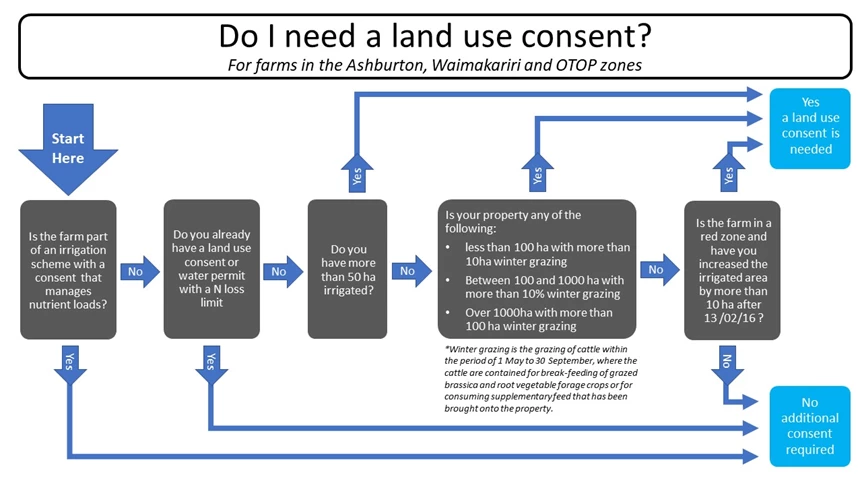Selwyn Hinds Canterbury Profitability
4 min read
Meeting a Sustainable Future is a DairyNZ initiative that helps farmers in the Selwyn and Hinds regions align their farming with environmental standards while ensuring profit and resilience. The project, spanning five years from 2018, collaborates with farmers and advisors to reduce environmental impacts like water pollution and greenhouse gas emissions without harming profitability. Region-specific rules, such as Plan Changes 1, 2, and 5, guide farms on nitrogen loss limits and other practices. Partner farms share their progress and insights. To join or learn more about local events, contact Virginia Serra, the project lead. If you're a farmer or rural professional, opportunities to collaborate are available.
Meeting a Sustainable Future is a levy funded DairyNZ initiative to support farmers in the Selwyn and Hinds catchments meet their environmental obligations while optimising their farm systems for profit and resilience.
We have been working alongside a group of farmers and their trusted advisors to explore the options for reducing their farm’s environmental footprint (water quality and greenhouse gases) while maintaining profitability and considering the strategic objectives of their business.
This initiative is part of a five-year project that was launched in September 2018 and is complementing the good work already being done by farmers, scientists, and rural professionals.
Farms in the nutrient allocation zone of Selwyn Te Waihora Catchment come under Plan Change 1. The farm is required to operate at or below their baseline N loss figure (2009/10 to 2012/13) which needs to be consistent with good management practices (baseline files need to be updated to reflect GMP practices) from the 2017/18 season. Dairy farms require a further 30% reduction and 22% for dairy support blocks from their baseline figures by 2022.
If the property is not part of Central Plains Water Ltd, is greater than 10 ha and it has more an N loss of more than 15 kg N/ha/yr, or is in the cultural sensitive/values zone or phosphate risk zone, it requires a farming activity land use consent including a farm environment plan. If is part of Central Plains Water, it comes under their environmental management and the scheme consent.
For farmers who are part of Central Plains Water Ltd and would like further information on their requirements, please see their website.
The nutrient allocation sub-zone of Hinds (lower) between Hinds and Rangitata River, is under Plan Change 2. This Plan requires properties that are leaching more than 20 kg N/ha/year and are greater than 5 ha in size to have a farm environmental plan (FEP) and a farming activity land use consent by July 2017 unless they are part of an irrigation scheme.
Properties are required to submit their 2009/10 to 2012/13 Overseer nutrient budgets to form the baseline nutrient loss figure. From the 2017/18 season, unless part of an irrigation scheme, farms will be required to operate at or below their baseline N loss figure and be consistent with good management practices (baseline files need to be updated to reflect GMP practices).
Properties leaching more than 20 kg N/ha/year will be required to progressively reduce their N loss beyond good management practice levels by 15% by 2025, 25% by 2030 and 36% by 2035.
If a farm is part of an irrigation scheme it comes under the scheme environmental management and consent that manages nutrients. For farmers who are part of Mayfield Hinds Valetta Water, please see the MHVwater website, and for Barrhill Chertsey Irrigation farmers, see the BCI website.
Farms in these zones all come under Plan Change 5. Farms should be operating at or below their baseline GMP loss rate from 2020 onwards. This is the nitrogen loss rate if you were operating at good management practice in the baseline period (2009–2013). The baseline GMP loss rate is determined by an Environment Canterbury tool – the farm portal that takes an Overseer baseline file and adjusts the irrigation and nitrogen fertiliser inputs. This usually reduces the baseline nitrogen loss rate. In some cases, the number from the portal is considered to be incorrect and alternatives are required with help from a nutrient management adviser.
Under Plan Change 7 further N loss reductions beyond the baseline GMP loss rate are expected in 2030 for areas of the Waimakariri and OTOP. Hearings are due in 2020 to determine the reductions.

Further information on zone specific regulations, consents, GMP and FEPs are available on the ECAN Farmer's Hub. If you are part of an irrigation scheme in these areas, contact them for further details on your requirements.
Our partner farms are sharing their progress towards meeting regulations and improving their environmental footprint, while maintaining or improving profit. As this group make changes, they are sharing their learnings both within the group and more widely through field days, articles, web profiles and day to day conversations.
As part of this DairyNZ-funded project, we host a range of events for local farmers where you have the opportunity to see how other farms are adapting their farming systems. Check for upcoming events.
If you are a farmer, you could become one of the supported farmers. We currently have a full team of partner farms in the Selwyn and Hinds areas, but will be expanding this project into the Waimakariri and Orari Temuka Opihi Pareora (OTOP) zones in the 2020-21 season. If you are farming in this area there is the opportunity to become involved as a partner farm.
If you are a rural professional, you can work with the project team to provide research questions and find the most appropriate solutions for your client farmers.
For more information about the project please contact:
Virginia Serra
Project Lead
p: 021 932 515
e: virginia.serra@dairynz.co.nz